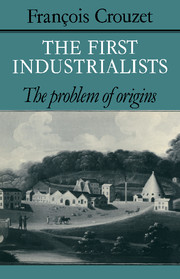5 - Noblemen and Gentlemen in Industry
Published online by Cambridge University Press: 25 October 2011
Summary
Owing to the deficiencies from which the samples suffer, the tables which have been drawn from them can give orders of magnitude only, and the figures for the various occupational and social groups must not be taken literally; this is why percentages have been calculated only for the larger ‘classes’ which include several groups. Nonetheless, these percentages can be considered as good approximations, and they give an adequate idea of the relative contribution to industrial leadership made by the different groups within British society.
The first conclusion is that neither the upper class nor the lower orders made a large contribution to the recruitment of industrialists. Of course, landowners, whether peers or gentlemen, did not abstain from entrepreneurial activity during the Industrial Revolution–- far from it; but they were active primarily in agriculture, in road- and canal-building and in mining, very rarely in manufacturing. Indeed, the retreat by landowners from involvement in industry, which had started in the seventeenth century, became more and more pronounced as the eighteenth century progressed. If they owned blast-furnaces, forges and other establishments, they tended to lease them to tenants rather than to operate them through salaried managers, and many were content simply to lease the mineral rights on their estates. They ‘fell into the background’ and were rather passive lessors and investors than active business leaders.
- Type
- Chapter
- Information
- The First IndustrialistsThe Problem of Origins, pp. 68 - 84Publisher: Cambridge University PressPrint publication year: 1985
- 1
- Cited by



